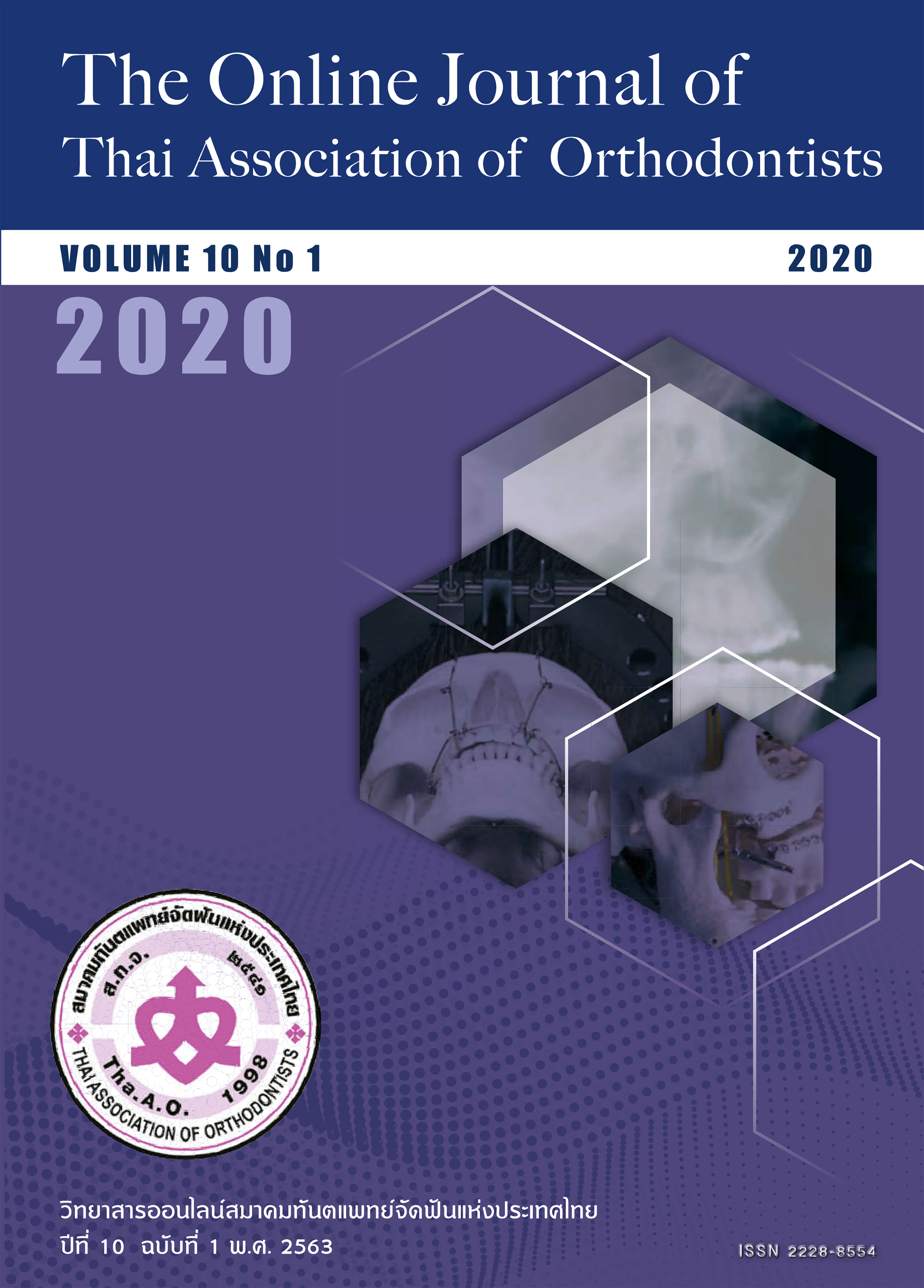Correlations between Soft and Hard Tissue Measurements in Thai Female Subjects with a Convex Profile
Main Article Content
Abstract
Introduction: The aim of this study was to investigate the characteristics of the soft tissue profile and relationships between soft and hard tissue measurements in Thai female subjects with a convex facial profile. Materials and Methods: Pretreatment lateral cephalograms of 130 Thai female subjects with a convex profile aged 18 - 44 years old were examined and compared to 30 female subjects with a normal profile. All cephalograms were traced and digitized by one investigator to assess soft and hard tissue cephalometric parameters using Dentofacial planner plus version 2.02 software. The associations between soft and hard tissue were analyzed using Pearson correlation coefficients. Results: Most subjects with a convex profile had an anterior Sn position (70.8%), followed by a normal position and posterior position. Normal and posterior Pg’ positions were most equally common in the subjects with convex profile. The two most frequent convex prof ile combinations were an anterior Sn position with normal Pg’ position (40.8%), and normal Sn with posterior Pg’ (21.5%). Hard tissue measurements in convex profile patients were correspondent with soft tissue
measurements, except measured with Co - A and Co - Gn based on A - Nperp (point A to Nasion perpendicular) and Pg - Nperp (Pogonion to Nasion perpendicular). Conclusions: The soft tissue profile of Thai female subjects with a convex prof ile corresponds well with hard tissue measurements. The Thai female subjects with convex facial profile mostly present with anterior Sn positions in combination of normal Pg’ positions.
Article Details

This work is licensed under a Creative Commons Attribution-NonCommercial-NoDerivatives 4.0 International License.


